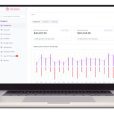Amid the US-led tech sell off the ASX-listed buy now pay later (BNPL) sector has had a decent touch-up, with valuations as much as 40 per cent down on their recent peak levels.
Is it enough to quell what many investment experts view as a clear case of irrational exuberance?
The near-term price graphs tell only half the story, with the providers trading well above the Henny Penny levels in March – the nadir of the coronavirus sell off.
At last glance undisputed sector leader Afterpay (APT) was trading 10 per cent shy of its August 25 peak of $92 a share, but miles above its March 23 low of $8.90/sh.
As it happened, the sector has proved almost impervious to any systemic delinquency problems during the corona crisis, while patronage continues to increase.
At the same time competition is intensifying, with Pay Pal now offering a ‘pay in four instalments’ option for purchases between $US30 ($42) and $US600.
Undeterred, the Kiwi based Laybuy Group Holdings (LBY) last month became the seventh ASX-listed BNPL stock, debuting at a sizzling 45 percent premium before drifting back towards its $1.41 a share issue price.
Still, the company is valued at around $260 million, despite modest revenue of $NZ35m ($32m) last year.
The other ASX BNPL listees are Zip Co (Z1P, $3.6bn), Sezzle Inc (SZL, $780 million), Openpay (OPY, $310m), Splitit (SPT, $620m) and the non pure-play Flexigroup (FXL, $530m).
Their Covid-19 experience was similar: they initiated collective belt tightening and tougher risk scoring for new applications, with hardship measures for the stragglers.
But the expected flood of defaults simply did not materialise.
Flexigroup, for instance, raised a $5.4 million ‘economic provision’ for expected problems.
As it happened, 90 day past due accounts were 0.53 per cent of the portfolio in July – an improvement on a year ago.
Afterpay reported a ‘net transaction loss’ (gross losses minus late fees) of 0.4 per cent of its underlying sales, flat on the previous year.
The second biggest ASX player, Zip reported a net bad debt rate of 2.24 per cent for the year to June 2020, with monthly arrears – a forward indicator — falling to 1.33 per cent in June.
“COVID-19 was a test for our models and other models in the sector generally,” Zip chief strategy officer Tommy Mermelshtayn says.
“If anything, customers have been more careful with their spending and the repayment rate is picking up.”
Openpay chief Michael Eidel aptly describes the period as “strange and difficult”.
But with the company’s arrears running at only 0.8 per cent of total turnover of $22.7m in the month of August, performance has been “clearly above” management’s expectations.
“We believe we have been able to strike the right balance between protecting merchants and customers and protecting the business,” he says.
Sezzle, which operates in the US and Canada, notes that hardship requests did not spike when COVID-19 household subsidies were wound back there.
“Customers are using us wisely,” Sezzle founder and CEO Charlie Youakim says. “We came out with flying colours and improved on a number of metrics.”
With their survival assured at least in the short term, the BNPL providers are diversifying their offerings, both geographically and in terms of the local sectors they are targeting.
If anyone needs reminding, the US retail market dwarfs Australia’s – a fact not lost in Afterpay which entered that market two years ago and now has five million active customers there.
Last month Zip completed the “transformational” purchase of US BNPL provider Quadpay for $200 million, funded via an issue of convertible notes and warrants.
“If you want to be a true global player you really need access to that market,” Mermelshtayn says.
Zip also plans to launch in the UK, a market also of interest to Openpay and Laybuy Group.
Locally, the BNPL players are also diversifying into the small business sector, as well as older consumers who make bigger value purchases for non-discretionary items such as healthcare and car repairs.
The SMEs are captured via alliances with key suppliers such as Officeworks and Bunnings.
As Zip’s Mermelshtayn notes, many of these SMEs are also potential merchants bin their own right, which expands the addressable market.
Openpay recently signed up Woolworths for its Openpay for Business, a cloud service that’s about simplifying the grocer’s dealings with suppliers in terms of credit checking, approvals an invoicing.
The alliance, which started to be rolled out in September, does not actually offer payment instalments.
Not surprisingly, the BNPL providers are keen to distance themselves from perceptions that they prey on millennial shoppers who aren’t eligible for credit cards for a good reason.
Openpay’s Eidel describes the company’s clients as “older and financially savvy”, with an average age of 39.
“They don’t use [BNPL] for instant low value but as a budgeting tool for high value items,” he says.
Flexigroup says 70 per cent of its customers are aged between 35 and 50 and with young families, which explains why the company has an average purchase of $3500.
So on the word of collective management, the BNPL model is resilient, diversified and not reliant on spendthrift youngsters.
Despite the pull-back in valuations, it’s also highly debatable whether the sector holds any allure for investors.
For a start, only one of them – Flexigroup – is profitable.
Afterpay racked up revenue of $519 million on turnover of $11.1 billion, but lost $22.9m (an improvement on the previous $43.8m deficit).
Zip lost $19.9m compared with a previous $11.1m loss.
Splitit’s June half revenue bounded 24 percent to $US3.1m with volumes up 133 per cent to $US89m. But the reported loss widened to $US8.9m from $US3.8m previously.
(Splitit has a distinct business model, in that it allows existing credit and debit card holders to pay in interest-free instalments without the need for additional applications).
Flexigroup posted an overall $21.4 million net profit overall, with its BNPL business making $5.7m post the $5.4m economic overlay.
The third biggest local BNPL operator, Flexigroup has been around for 30 years and dubs itself “Australia’s original fintech”.
Flexigroup is valued at about $500m while Afterpay is worth $23 billion – about half of the ANZ Bank’s market worth and four times the combined value of the Bank of Queensland and Bendigo and Adelaide Bank.
With new BNPL players emerging from the thickening undergrowth of offerings it’s hard to nut out what provider has genuinely superior growth prospects – if any.
What’s certain is that they won’t all thrive, but it may take some years before the winners and losers become apparent.
Disclaimer: Under no circumstances have there been any inducements or like made by the company mentioned to either IIR or the author. The views here are independent and have no nexus to IIR’s core research offering. The views here are not recommendations and should not be considered as general advice in terms of stock recommendations in the ordinary sense.
- Amid dazzling returns, is now the time to join the diamond hunt? - November 10, 2021
- Two listed ag stocks that promise a bounteous harvest for investors - November 3, 2021
- ASX-listed e-gaming stocks show promise but are they in the main event? - October 27, 2021












Leave a Comment
You must be logged in to post a comment.